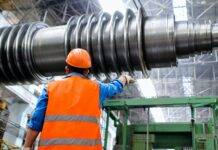
Hearing Conservation Programs: Monitoring and Training
Introduction
In workplaces with exposure to high noise levels, hearing conservation programs play a pivotal role in preventing noise-induced hearing loss (NIHL) among employees. These programs, encompassing monitoring and training initiatives, are essential for protecting auditory health and ensuring regulatory compliance. This article delves into the key components of hearing conservation programs, emphasizing the significance of continuous monitoring and comprehensive training.
Understanding Hearing Conservation Programs
- Purpose and Importance
- Preventing NIHL: The primary objective is to prevent hearing damage caused by prolonged exposure to hazardous noise levels in the workplace.
- Regulatory Compliance: Hearing conservation programs are often mandated by occupational health and safety regulations.
- Components of Hearing Conservation Programs
- Noise Monitoring: Regular assessment of noise levels to identify areas requiring intervention.
- Audiometric Testing: Periodic hearing tests to monitor employees’ auditory health.
- Training and Education: Providing employees with knowledge and skills to protect their hearing.
- Use of Hearing Protection Devices (HPDs): Encouraging and facilitating the use of earplugs or earmuffs.
Importance of Continuous Noise Monitoring
- Identifying High-Noise Areas
- Decibel Levels: Utilizing sound level meters to measure noise levels in different work areas.
- Mapping Noise Exposure: Creating a noise exposure map to pinpoint areas with excessive noise.
- Regular Audiometric Testing
- Baseline and Follow-up Tests: Conducting baseline hearing tests upon employment and regular follow-up tests to track changes.
- Early Detection: Detecting early signs of hearing loss allows for timely intervention.
- Adjusting Control Measures
- Engineering Controls: Modifying equipment or processes to reduce noise levels.
- Administrative Controls: Implementing measures such as job rotation to minimize individual exposure.
- Personal Protective Equipment (PPE): Ensuring proper use of HPDs based on continuous monitoring results.
Comprehensive Training Programs
- Employee Awareness
- Understanding NIHL: Educating workers on the risks and consequences of noise exposure.
- Recognizing Hazardous Noise: Training employees to identify areas with excessive noise.
- Correct Use of Hearing Protection Devices
- Proper Insertion: Instructing employees on the correct insertion of earplugs or proper fitting of earmuffs.
- Maintenance: Educating workers on the regular inspection and replacement of HPDs.
- Communication Skills
- Effective Communication in Noise: Providing guidance on communicating effectively in noisy environments.
- Sign Language Training: Offering training for sign language or alternative communication methods.
Benefits of Hearing Conservation Programs
- Prevention of Hearing Loss
- By monitoring noise levels and providing effective training, these programs contribute to preventing NIHL.
- Regulatory Compliance
- Adherence to regulatory standards ensures a safe working environment and avoids potential penalties.
- Employee Well-being
- Fostering a culture of auditory health enhances overall employee well-being and job satisfaction.
- Increased Productivity
- Reduced absenteeism due to hearing-related issues contributes to increased workplace productivity.
Conclusion
Hearing conservation programs are indispensable for safeguarding employees’ auditory health and maintaining regulatory compliance. Through continuous noise monitoring, regular audiometric testing, and comprehensive training initiatives, organizations can create a workplace culture that prioritizes hearing protection. By investing in these programs, employers not only protect their workers from the detrimental effects of excessive noise but also contribute to a safer and more productive work environment.
How To Prepare Risk Assessment for Noise
Noise Hazards and Control Measures
Frequently Asked Questions (FAQs)
- What is the purpose of hearing conservation programs?
- The primary purpose is to prevent noise-induced hearing loss (NIHL) by monitoring noise levels, conducting audiometric testing, and providing training to employees.
- What are the key components of hearing conservation programs?
- Components include noise monitoring, audiometric testing, training and education, and the use of hearing protection devices (HPDs).
- Why is continuous noise monitoring important in hearing conservation programs?
- Continuous monitoring helps identify high-noise areas, allows for regular adjustment of control measures, and contributes to the early detection of hearing loss.
- How do comprehensive training programs benefit employees?
- Training programs raise awareness about NIHL, teach correct use of hearing protection devices, and enhance communication skills in noisy environments, contributing to overall employee well-being and productivity.





















